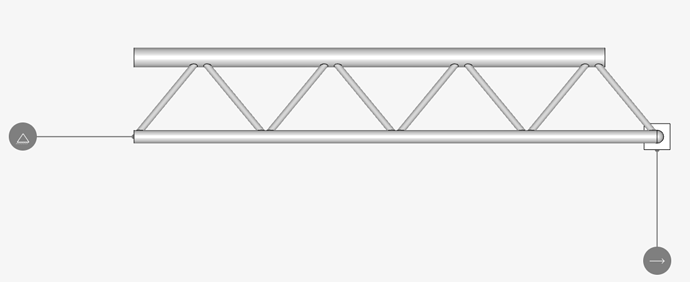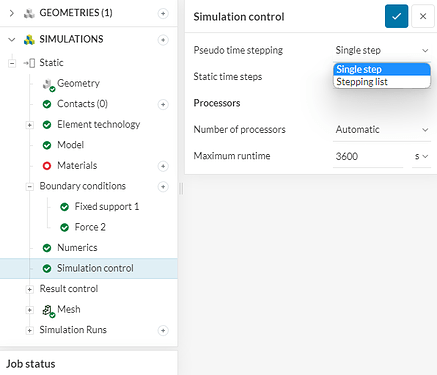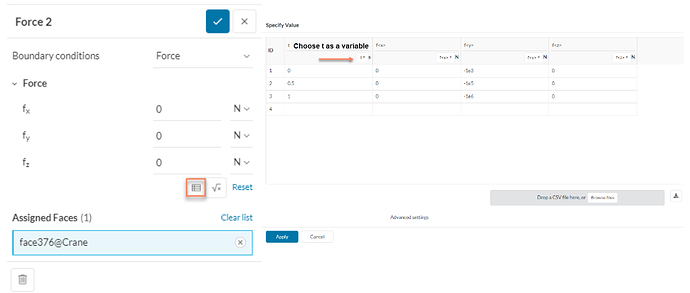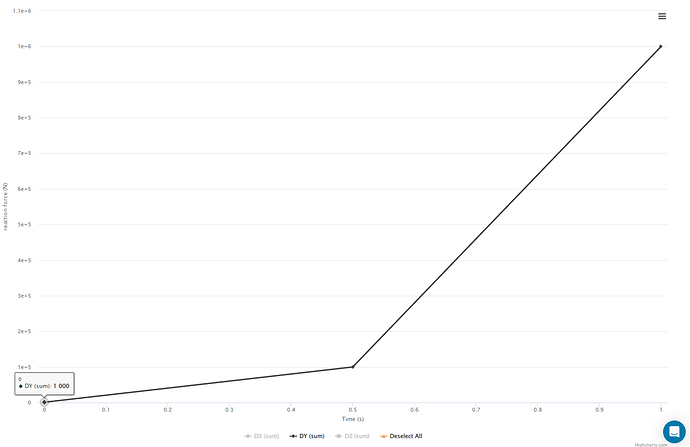Let’s answer this question with a simple example of a linear static analysis of a crane as shown below:
The story here is that you might want to understand the stresses and deformations that this crane will experience under different loading scenarios. Now, of course you can run multiple simulations in parallel on the cloud and post-process each load case and so on.
But there is an alternative way to approach this and that is by defining a pseudo time step for the loads. You can find the pseudo time stepping options in the simulation control settings. There are two types:
-
Single step : This would run a simulation based on a single time step only.
-
Stepping list: This would run multiple load cases in one simulation where each load case has a predefined time information. In this option, you can define the simulation interval (total pseudo time) and the time step length.
Essentially, these settings allows you to run simulations with multiple load cases that would be parameterized by the time variable, the stepping list would allow you to sweep through them all while the single step would allow you to run a specific load case.
Okay, enough theory, let’s go back to the crane example and see what all that means:
When defining a load, there is an option to select a table input which allows the user to associate different load scenarios with their corresponding time value. The figure below illustrates this process. Here we can see that three different load cases were defined at different “timesteps”.
Now going back to the simulation control settings, there we can now define a pesudo time stepping of type stepping list, where the simulation interval would be equal to 1 seconds (that’s the “time” associated with our last load case) and the interval which in this case is 0.5 s.
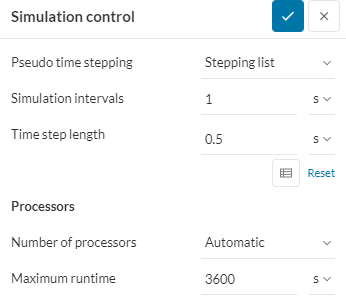
Finally, let’s take a look at the results and notice how the maximum displacement changes at each time step due to the load increasing in each load case:
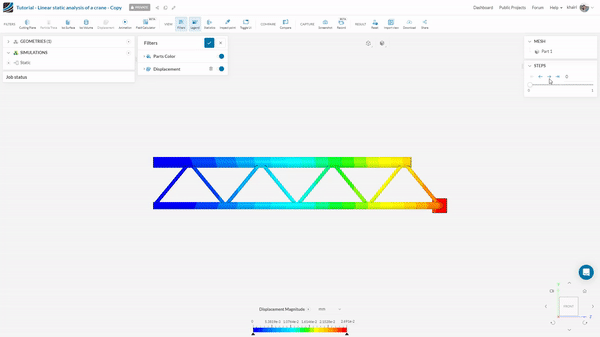
To verify that each time step actually belongs to a single load case, we can take a look at the sum of reaction forces where the fixed support had been applied:
It can be cleary seen that at “time” 0 the sum of reaction forces is equal to 1000 which was the load defined at that timestep and so on.

